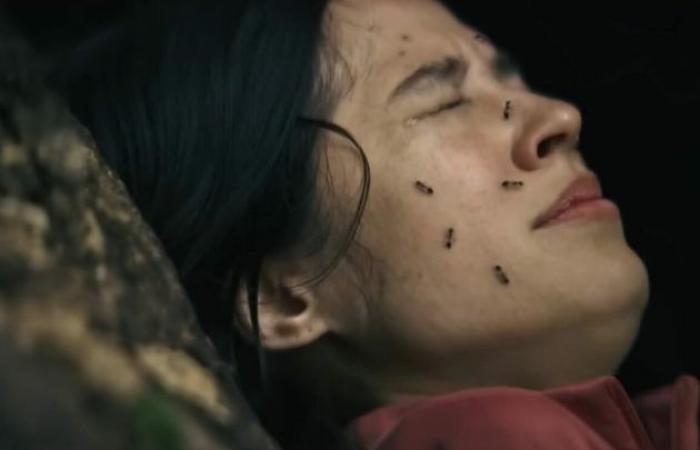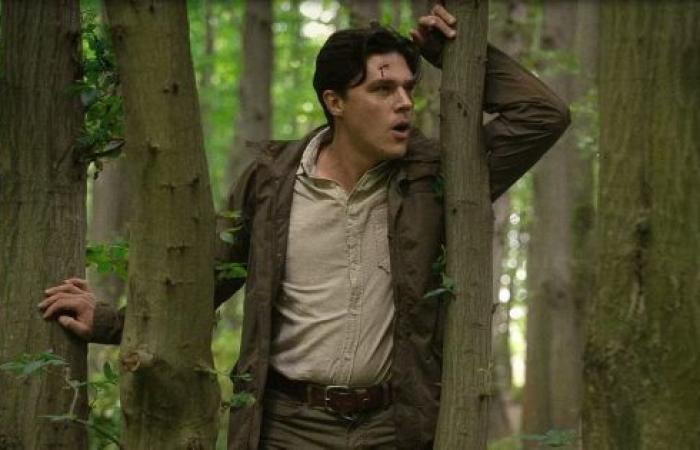A perfectible structure
A grieving woman must find a way to escape her attacker in the middle of the forest before her nervous system fails: with her high concept, Don’t Move plastron alongside the Buried, 127 Hours, Jessie and others Nowhere. The recipe is known: an obvious and significant situation of dangera tight duration (1h32 including shower), a contained budget and the name of Sam Raimi hugely on the poster in the hope of transcending it… even though he is only the producer.
Contrary to what his pitch might suggest, TJ Cimfel's screenplay (I/H/S Viral) et David White (Intruders) rushe the part where the product gradually gains ground in the victim's body, reduced to around ten minutes. The dilemma of physical effort accelerating its effect, however, offered some promise.
The heroine is therefore quickly plunged into a confinement syndrome which increases her vulnerability tenfold, but whose twists and turns require by definition the intervention of third parties. The structure then becomes quite mechanicalalternating apnea encounters and feeling hungry while waiting for the next one. This choice, respectable in absolute terms, is more questionable on a concept of this kind, which lends itself so wonderfully to survival in crescendo continued.
Especially since these breaths traditionally serve to deepen the characters. But the heroine being inert and mute most of the time (a challenge for Kelsey Asbille, escaped from Yellowstone), we feel them as what they are: a summary outline between two points of tension to be connected. The redundant aspect of this narrative loop makes the outcome of each segment quite predictable, even if certain scenes are rather honest in their management of apprehension.


Oppression through speech
With his worrying face, Finn Wittrock (American Horror Story) first advances masked by saving the heroine from suicide. The scene of his change of face, and the horribly prosaic way in which she finds herself physically at his mercyturn out to be chilling.
Although he willingly resorts to chemistry and various forms of violence, it appears that his best weapon remains his word. The beginning of the film is silent: it is he who breaks the silence to lure her into his net, and it is through exchange that he tries to get out of compromising situations.
Certainly, this choice to promote rhetoric also resembles a certain ease in order to lengthen the sauce at little cost. Moreover, the staging shows itself to be horribly clumsy in building other forms of suspense: a moving thought for its attempt to increase the pressure around a lawnmower, before a wide shot makes the threat laughable.


This process, however, offers some simplistic but relevant metaphorical ideas. Although a recent thesis makes Little Red Riding Hood a warning against threats from home rather than from outside, that the danger unfolds in the forest necessarily evokes the big bad wolf, a stranger with an affable approach who feeds on vulnerability.
The problem is that the behavior of the antagonist isa mixture of ultra clairvoyance and absolute stupidity. He is both the most foresighted attacker in the world and the stupidest, since he checks the settings of his connected watch (instead of taking it away) and administers a powerful sedative “just in case”… but forgets to pick his pockets.
This approximate writing in turn prevents one from immersing oneself in the reconstruction of the heroine, who will (re)find in this confrontation an unexpected combativeness. Until you regain a taste for life, like a Gravity dont Don’t move marries a key moment.
Don't Move is available on Netflix since October 25, 2024 in France












